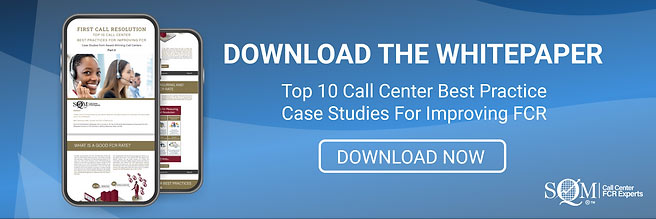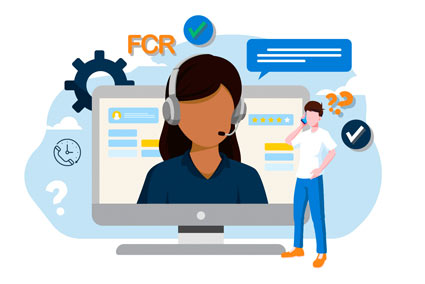What is Call Handling?
Call handling is about managing inbound and outbound phone calls that a call center receives and makes. For example, it allows a call center to route incoming calls to the right agent with the necessary call handling skills to resolve the customer's inquiry or problem effectively and efficiently.
Call handling encompasses business practices such as intelligent skill-based routing, first call resolution focus, how calls are handled, concierge service, complaint handling, and agent and customer communication styles.
Why Improve Agent Call Handling Skills?
Call handling is one of the best opportunities for improving First Call Resolution (FCR) and Customer Satisfaction (Csat). Unfortunately, SQM's research shows that in approximately 40% of non-FCR calls, the Agents were the source of error.
SQM group's research shows that 93% of customers using a call center expect to resolve their inquiry or problem on the first call. As a result, FCR performance drives customer service and cost performance. For example, SQM Group's research shows "for every 1% improvement in FCR, there is a 1% improvement in Csat" and you reduce operating cost by 1%."
Furthermore, one of the quickest ways to improve FCR is to improve Agent call handling practices.
Call Handling Best Practices
Top 6 Call Handling Best Practices that have a proven track record of improving FCR and customer service:
1. Intelligent Skill-based Call Routing
Intelligent skill-based routing is a call assignment practice used in contact centers to assign incoming calls to the most suitable Agent rather than simply the next available Agent. The most suitable Agent is determined by utilizing information about who is calling and why they are calling to match up with an available Agent who has the necessary skill to resolve the customer's call.
Many contact centers use a generalist Agent for call handling practice resulting in having a large queue of generalist Agents to handle calls, but they are not specifically matched to customer needs. SQM's research shows that in most cases, the specialized Agent's skill set to handle specific call types has higher FCR performance than the generalist Agent who has a skill set to handle most or all call types.
Specifically, intelligent skill-based routing technology can route calls based on call reason, line of business, customer repeat call identification, customer personality, dialled number, time-of-day, and other customer-defined criteria. In addition, intelligent skill-based routing can also route customers by language preference, the caller's geographic location, and customer value.
Once intelligent skill-based routing practices have been defined, calls can then be assigned to specific Agents based on their skill set. For example, with intelligent skill-based routing, customers who call back within three to five business days can be identified and transferred to the best Agent within the skill set queue needed to resolve the customer's call or the original Agent who handled the call.
SQM has found that it is not uncommon for a new customer to call one to five times within the first 90 days of becoming a new customer and a typical customer to call one to three times per year. Based on this data, a best practice is to identify new customers and route them to an Agent skill set queue specializing in handling new customer call types (e.g., product information, claim benefits, and billing).
The bottom line is that intelligent skill-based routing can improve FCR and Csat by up to 5%. Call duration is also shortened because Agents are handling calls for which they have the skills. Cost per call resolution will improve because a more knowledgeable Agent handles the customer's call.
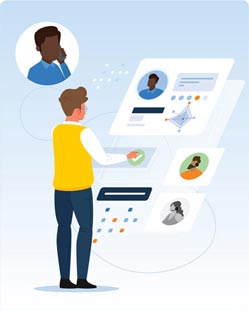
FCR best practices for using intelligent skill-based routing are as follows:
New Customers
SQM has found that new customers have questions and situations that arise and place multiple calls in the first 90 days of their association with an organization (unlike existing customers). Therefore, it may be appropriate to identify new customers in the CRM and route them to Agents trained in new customer issues. Proper and complete onboarding of new customers is critical to heading off future calls and collecting customer information upfront to serve them down the road better.
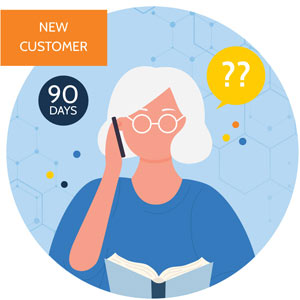
Repeat Callers
Customers who are repeat callers because of 'pending resolution,' 'open cases,' 'open trouble tickets,' or are calling within one to five days of their previous call should be flagged and routed to a specialized Agent or to the best Agents who can resolve their call. In addition, these Agents should be empowered to make clear follow-up commitments to the customer to avoid the customer calling back for further status updates.
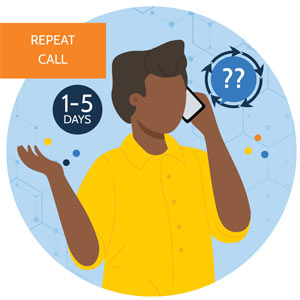
High-Value Customers
Route high-value customers to specialized Agents and, if there is competition for these Agents' availability, assign high-value customers a priority for queuing time. These customers should be presented to Agents with a higher priority than regular customers, and Agents should be empowered to provide concierge service to these valuable customers.

Default Customers
If a customer is flagged as defaulting their account, their call can be routed immediately to the group responsible for collections and payment arrangements. If necessary, only after acceptable payment terms are reached should the customer then be provided further service.
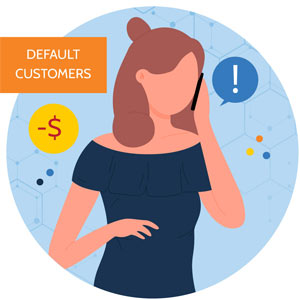
Wait Time for Customers
Service levels are something that all contact centers struggle with, and many repeat calls are driven by callers who abandon the queue to call back later. Intelligent skill-based routing can script alternate destinations for calls during peak calling hours by understanding the abandoned thresholds. For instance, all calls in the queue for over two minutes may be routed to an alternative skill with available Agents. These alternative skills should be closely matched to the primary servicing skill type to provide the customer with the best service possible. An alternative is for the customer to be given a choice in the IVR for an automated call back (queue placement retained) or to schedule a call back at a specific time.
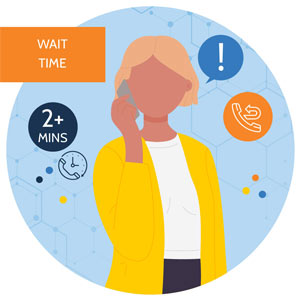
Defecting Customers
It may warrant using speech recognition to route calls to a retention Agent when a customer mentions cancelling service. In this way, callers can be routed to Agents specialized in 'retention' or 'loyalty' skills. These Agents are highly skilled at retaining customers and are empowered to make service offers more attractive to customers.
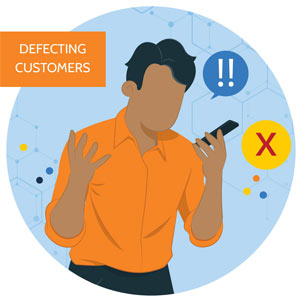
2. The Shift from Average Speed of Answer to FCR Focus
The contact center industry has traditionally used service level and average speed of answer (ASA) as the Holy Grail for defining customer service. Unfortunately, while these metrics speak to speed, they do little to shed light on Customer Satisfaction (Csat), or more importantly, the number of calls a customer makes to resolve their inquiry.
Although keeping track of these metrics remains essential, it is not considered a best practice to focus on service level and ASA metrics as the key indicator of customer service. Instead, a best practice is to use FCR, not service-level metrics, to measure a contact center's customer service performance.
Proper execution in shifting from a service-level focus to an FCR focus can be challenging for contact centers with an ingrained culture of defining customer service success through service levels and ASA. For contact centers to successfully transition from a service-level and ASA focus to an FCR focus, there needs to be a paradigm shift in thinking that FCR, not service levels, is the key to Csat.
SQM research shows that ASA has no impact on Csat for the first 120 seconds of a call. In other words, if an agent answers the call within 120 seconds, there is neither a positive nor a negative impact on Csat. What customers want is to have their call resolved and preferably on the first call.
3. Call Resolution Delivery Model
At the heart of world-class customer service is how Agents handle calls. Resolving calls and having very satisfied customers requires Agents to be highly skilled at call handling. Contact center managers know very well that Agents must have the necessary product, service, and technology knowledge, but just as important is their ability to handle calls to resolve the call, and the customer's call is resolved and feel they received great customer service.
It is no surprise that Agents are not always as effective with the soft skills aspect of call handling. Most people are unaware of the importance of body language when communicating with someone. Verbal communication only accounts for a small percentage of total communication. Agents need to make the phone conversation verbally positive because body language is lost on the phone contact method. It is important to remember the old saying, "it is not what you say that matters, but the way you say it." In essence, the Agent's voice tone is the body language component of communication in that it conveys to the customer the Agent's feelings and emotions.
To help Agents gain effective call handling practices, SQM has developed a Call Resolution Delivery Model (see Figure 1) that defines the customer service standards an Agent should follow to successfully resolve customer calls at the world-class level of 95%. Specifically, these standards are based on listening to customer feedback and determining what satisfies the customer and resolves their inquiry on the first call.
The world-class call resolution delivery standards were developed from surveying over five million customers who called a contact center. As a result, there is tremendous confidence that these standards are beneficial for supervisors when coaching Agents on delivering world-class FCR and call resolution performance.
As shown in Figure 1, the Call Resolution Delivery Model for Agent call handling comprises the four key customer moments of truth that matter the most to customers.
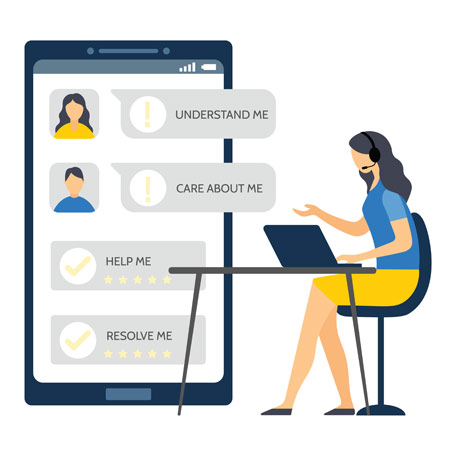
Figure 1: Call Resolution Delivery
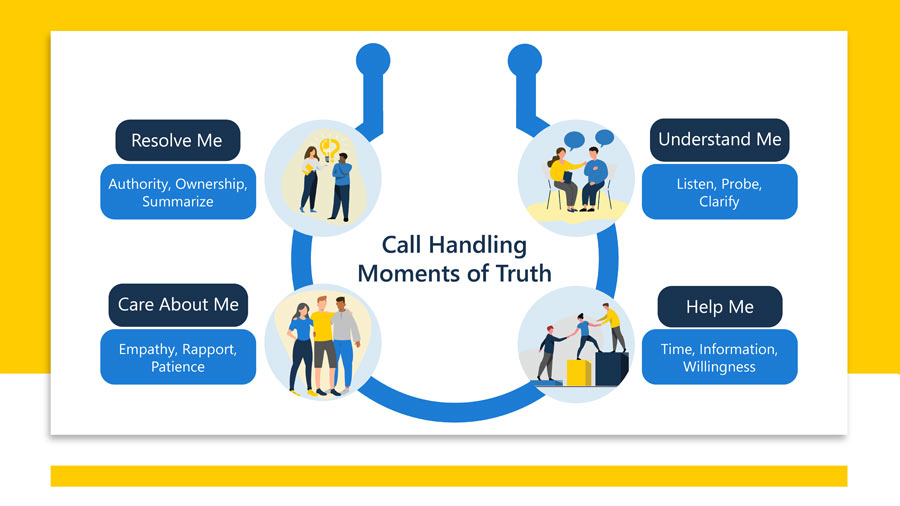
Listed below is a brief description of each moment of truth in the Call Resolution Delivery Model.
Understand Me – Agent determines and confirms the reason(s) for the customer's call by actively listening, probing, and clarifying to ensure understanding and acknowledging call history and documenting the conversation.
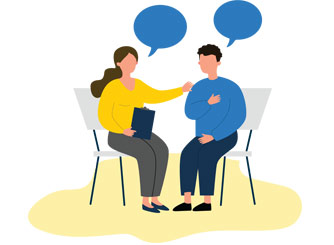
Help Me – Agent expresses and demonstrates a willingness to help customers by letting them know they can help them, providing accurate and complete information, focusing on the inquiry, taking the necessary time to help the customer, and educating them with solution options.

Care About Me – Agent uses a friendly, enthusiastic, and warm voice tone, builds rapport, shows caring and empathy for the customer's situation, is patient, honest, and expresses appreciation for the customer's business.
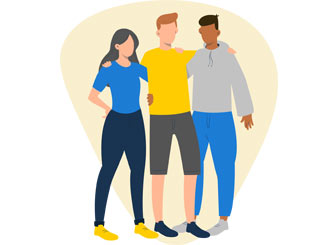
Resolve Me – Agent resolves customer's inquiries or problems by answering questions, solving problems, using authority and taking ownership, providing fair treatment, summarizing calls, communicating next steps, and confirming that the call is resolved.
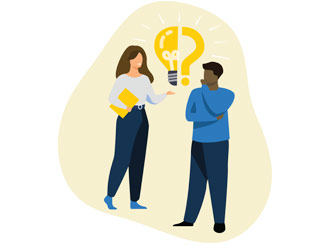
4. Concierge Call Handling Service
The practice of concierge call handling service is moving from the hospitality industry to the contact center industry. To most people, a concierge service means employees are working at high-end hotels and providing customers with information about the best restaurants, directions, or where to purchase theatre tickets. In some cases, they can make dinner reservations or purchase event tickets on a customer's behalf, but in most cases, they provide information, just as websites or Agents do. Interestingly, providing contact center concierge service is an excellent opportunity for Agents to resolve customer calls that would otherwise go unresolved.
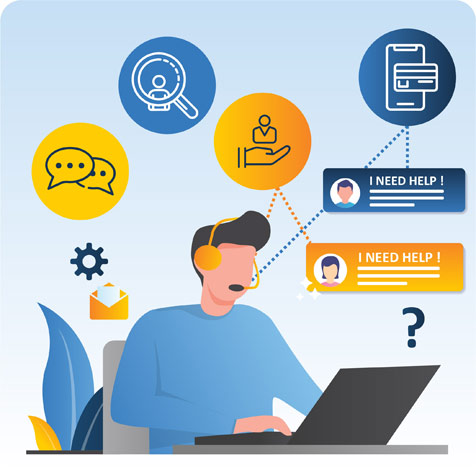
The way concierge service works in a contact center environment is an Agent helps a customer by contacting other departments or organizations for a reference code, more information, or authorization to resolve the customer's call. Specifically, the concierge Agent tells the customer that they will call the necessary department or organization on their behalf or with them on the line to get the reference code, information, or authorization needed to resolve the call. In most cases, a concierge Agent calls other departments or organizations while the customer is on the phone and a three-way conversation occurs.
Concierge service makes the customer feel like the organization has completely resolved their inquiry or problem. The contact center concierge service creates high FCR and Csat performance because the customer does not have to call or contact third parties such as a doctor's office, head office, bank, or retail store. The customer also feels that their problem or inquiry is resolved in one call. SQM tracks the reasons why customers have to call more than once to get their call resolved. One of the main reasons a customer has to call more than once is to provide the Agent with more information. In fact, 4% of all repeat calls result from a customer providing the Agent with more details.
It is also important to note that the contact center's operating costs can be lowered by eliminating callbacks from customers who have to provide the Agent with more information. SQM has found that it is more cost-effective to have one longer call than two or more calls dealing with the same inquiry or problem. Also, Csat is substantially higher when a customer only has to make one longer call instead of repeat calls to resolve the same inquiry or problem.
Essential aspects of the contact center concierge service are that Agents focus on doing whatever it takes to resolve the customer's call. As a result, agents become conditioned to go the extra mile to help customers resolve their inquiries or problems on any call. In addition, having Agents routinely go the extra mile leads to improvements in the performance of the contact center's FCR, Csat, and cost per call resolution.
Concierge service best practices that help the contact center improve the performance of its FCR, Csat, and cost per call resolution are as follows:
- Rather than focus on Average Hold Time (AHT), managers focus on doing the right thing for the customer. Managers remove AHT metrics from individual Agent scorecards and instead focus on calls resolved and FCR at the organization level
- Call handling standards clearly state that whenever customers have to call another department or organization to get more information to have their issue resolved, it is the Agent's responsibility to get the required information on behalf of, or with, the customer
- The contact center's QA program and customer surveys are used to measure whether or not Agents provided effective concierge service
- Agents are trained and coached on how to provide concierge service
- Agents are recognized for delivering concierge service
- Agents are held accountable for their Csat and call resolution performance
- Agents educate customers, when possible, on using self-service channels to get information
- Agents are educated on what fulfillment departments need to do to process items such as requests, orders, and claims
- The contact center is always looking for ways to improve its people, process, and technology practices to avoid customer callbacks due to the customer having to provide the Agent with more information
- Agents have a 'goes the extra mile' attitude to resolve the customer's call. This attitude is primarily manifested by concierge service calls but is also transferred to other call types
5. Complaint Call Handling
The vast majority of contact centers do not know the percentage of customers who consider their call to the contact center a complaint. Most contact centers do not have standard business practices for identifying and handling customer complaints. SQM research shows that 13% of customers calling a contact center describe their call as a complaint. The complaint caller's Csat (top box rating response) is 41%, while the non-compliant caller's (top box rating response) is 76%. The contact center industry needs to improve in identifying and handling customer complaints.
Effective complaint handling for the contact center industry has been a long-term Achilles' heel. Therefore, it represents an excellent opportunity to implement complaint handling best practices to protect the organization's greatest asset – its customers.
Handling Angry and Upset Customers
Many angry or upset customers have very low expectations that their issue or problem will get resolved to their satisfaction. However, dealing with an angry customer represents an excellent opportunity to meet or exceed their expectations to resolve the issue or problem. Put differently, a customer complaint is a gift because you get the chance to deliver service recovery and learn from mistakes. The following is an effective complaint handling three-step process an Agent or escalation Agent can use when handling angry or upset customers.
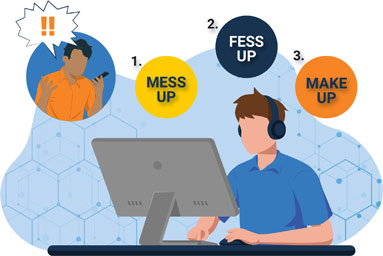
Three-Step Process for Handling Angry or Upset Customers
Mess Up – allow the customer to tell their side of the story and vent their frustration without being interrupted. The Agent acknowledges that they have heard the customer using words such as uh-huh, hmm, I see, and tell me more. Listening to the customer and letting them vent allows them to calm down.
Fess Up – ask questions to ensure understanding of the issue or problem. Agent restates the issue or problem to confirm that they fully understand. Agent apologizes for the organization's mistake or expresses empathy for the customer's situation. If an entire agreement between the customer and Agent cannot be reached on the issue or problem, try to seek a partial agreement on the issue or problem to defuse the customer's anger.
Make Up – resolve the customer's issue or problem to their satisfaction. Many customers have low expectations that their issue will get resolved to their satisfaction. By providing a solution or solution options to resolve their issue or problem, you have an opportunity to meet or exceed the customer's expectations. The Agent should confirm with the customer that there is agreement that the solution or solution options will resolve the customer's issue or problem (e.g., Have I resolved your issue or problem?).
6. Persona Communication Styles
Most agents cannot identify the different persona styles for the customers who call them or are not trained to adapt to match their communication style to the customers' Persona Communication Styles. Therefore, most contact centers do not understand the impact of different customer and Agent Persona Communication Styles on their customer experience (CX) performance.
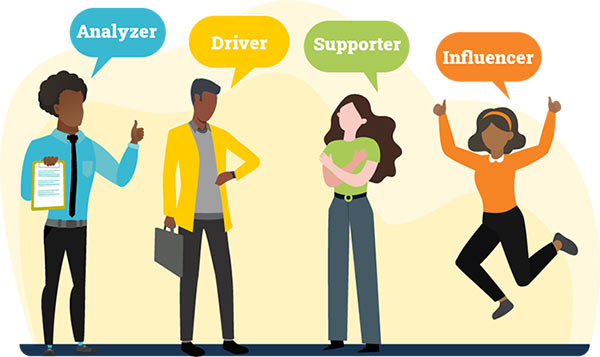
What Are Persona Communication Styles?
Both customers and employees use one of four Persona Communication Styles (i.e., supporter, influencer, analyzer & driver) as their primary communication style when interacting with others. Identifying customer and employee communication styles and applying adaptability style strategies helps agents determine the best way to successfully interact with customer persona communication styles.
Contact centers and agents who provide great CX (e.g., high FCR, call resolution, and NPS ratings) have high adaptive style ratings for handling different customer Persona Communication Styles. An Agent needs to identify a customer's persona they are interacting with quickly and adapt to their Persona Communication Style to deliver great CX and improve Csat.
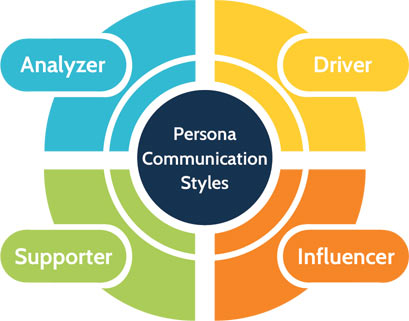
SQM's Unique Approach to Persona Communication Styles
While there are many ways that organizations measure communication styles, at SQM, we realize the value of letting the customer be the judge for determining their communication style. As a result, SQM's Persona Communication Styles is unique because it uses the voice of the customer. After all, it is the customer's view that matters most for assessing and improving CX.
Therefore, SQM conducted comprehensive research to determine persona communication styles. Furthermore, our research identifies the Agent behaviors and word choices that an Agent can use to adapt to a customer's persona and ultimately provide a great customer experience.
Interested in Persona Communication Styles? REQUEST A DEMO of our software and see how you can implement this Call Handling Best Practice.
Overview of the 4 Communication Styles

Agent Adaptability Score
To determine Agent adaptability capabilities, we asked the customer how strongly they agreed that the Agent's communication style was a good fit for them. To assess Agent adaptability capabilities, SQM uses an Agent Adaptability Score. This score is based on the percentage of customers who rated them top box response (i.e., Strongly Agree).
It is important to note that agents with high adaptability scores have the same customer satisfaction ratings across all customer Persona Communication Styles. Therefore, low Agent Adaptability Scores represent an excellent opportunity for most contact centers to improve their Agent's ability to quickly identify the customer's Persona Communication Style within the first minute of the call and train them on how to adapt their communication style to match the customer's Persona Communication Style.

Matching an Agent's communication style to a customer's Persona Communication Style will create a stronger connection and enhance their experience in doing business with your organization, resulting in higher call resolution and Csat ratings. Each persona impacts the preferred way a customer and an Agent acts, thinks, and makes decisions. By identifying the Persona Communication Style, an Agent will use behaviors and word choices that match the customer Persona Communication Style.
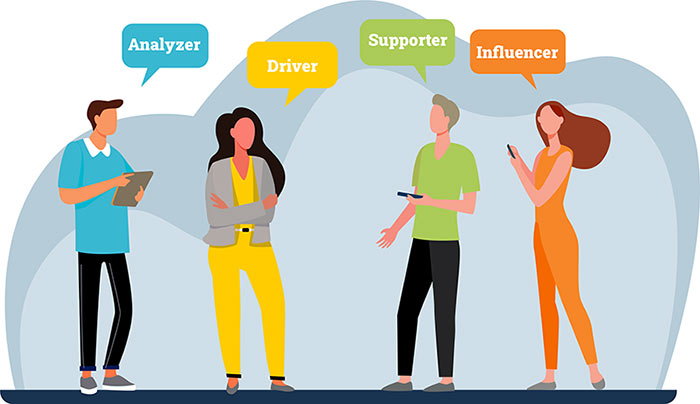
Top 10 Best Practice
Case Study Whitepaper
Quick Related Links
First Call Resolution Definition First Call Resolution PPT First Call Resolution Benefits
First Call Resolution Strategies First Call Resolution Operating Philosophy Call Handling Case Study Intelligent Skill-Based Routing CRM Average Speed of Answer Concierge Service Handling Customer Complaints VoC Performance Management


